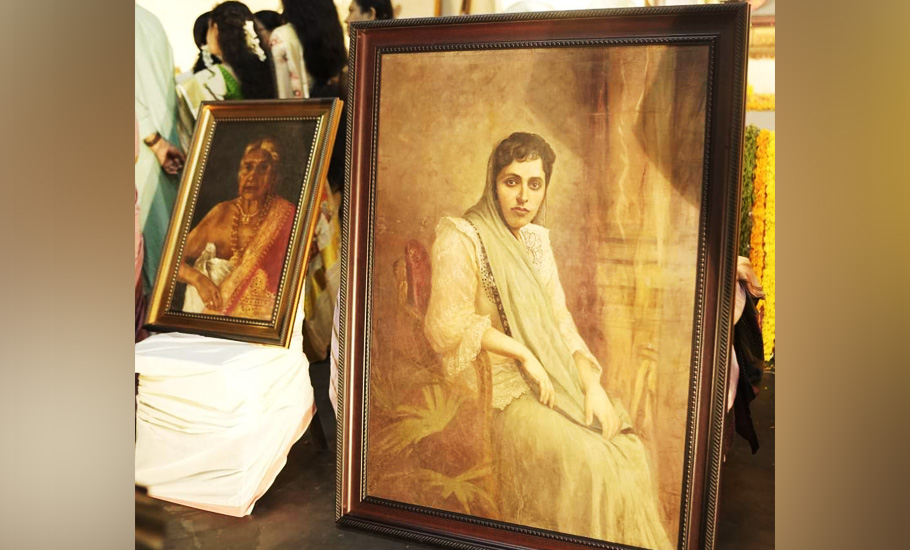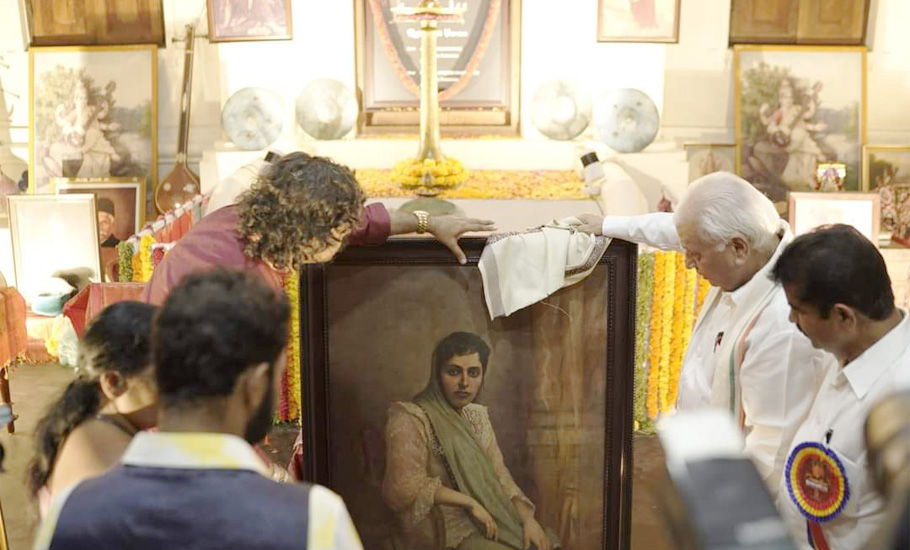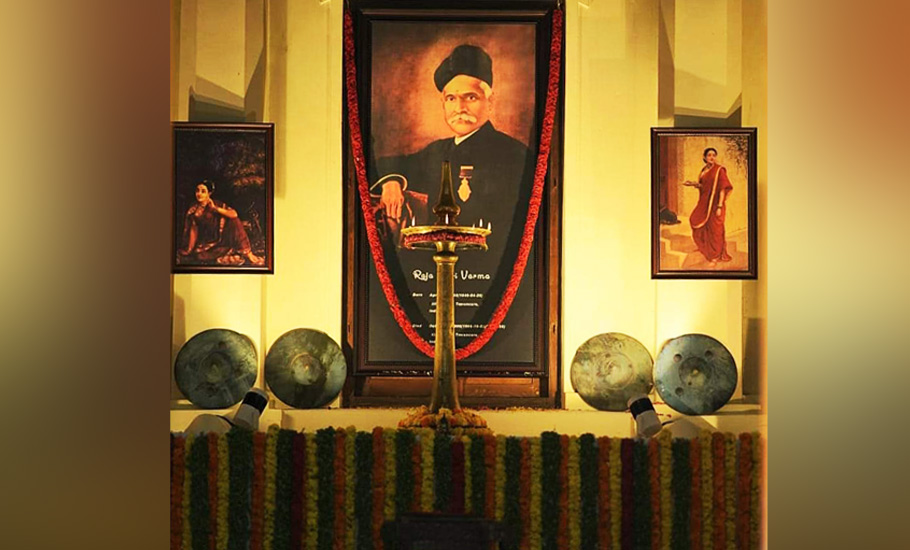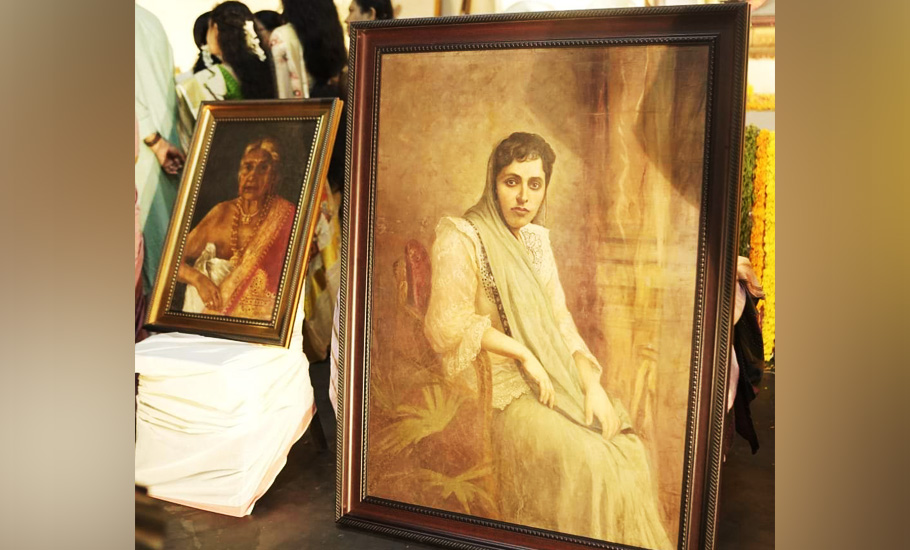
- Home
- News
- Analysis
- States
- Perspective
- Videos
- Education
- Entertainment
- Elections
- World Cup 2023
- Features
- Health
- Business
- Series
- Economy Series
- Earth Day
- Kashmir’s Frozen Turbulence
- India@75
- The legend of Ramjanmabhoomi
- Liberalisation@30
- How to tame a dragon
- Celebrating biodiversity
- Farm Matters
- 50 days of solitude
- Bringing Migrants Home
- Budget 2020
- Jharkhand Votes
- The Federal Investigates
- The Federal Impact
- Vanishing Sand
- Gandhi @ 150
- Andhra Today
- Field report
- Operation Gulmarg
- Pandemic @1 Mn in India
- The Federal Year-End
- The Zero Year
- Premium
- Science
- Brand studio
- Home
- NewsNews
- Analysis
- StatesStates
- PerspectivePerspective
- VideosVideos
- Entertainment
- ElectionsElections
- Sports
- Loading...
Sports - Features
- BusinessBusiness
- Premium
- Loading...
Premium

Ravi Varma’s Parsi Lady lifts her veil after a century of wear and tear

Born in 1848 in Kilimanoor Palace, Raja Ravi Varma was a painter well ahead of his times. A master of classical realistic portrayals, many of his works still stand the test of time. But time ran out on Varma when it came to completing his last work. The work came back into reckoning a couple of weeks ago when Kerala Governor Arif Muhammed Khan unveiled ‘Parsi Lady’, the last...
Born in 1848 in Kilimanoor Palace, Raja Ravi Varma was a painter well ahead of his times. A master of classical realistic portrayals, many of his works still stand the test of time. But time ran out on Varma when it came to completing his last work. The work came back into reckoning a couple of weeks ago when Kerala Governor Arif Muhammed Khan unveiled ‘Parsi Lady’, the last unfinished work of Ravi Varma (1848-1906) after inaugurating the 175th birth anniversary celebrations of the veteran artist at the Kilimanoor Palace, 32 km from Thiruvananthapuran.
Ravi Varma, who popularised realistic painting in India, redefined the idioms of Indian tradition, using European techniques. He also took art to the common man, establishing printing presses to make reproductions of his works in various parts of India. Completing his last work was therefore a both ambitious and significant task.
The restoration of Parsi Lady — an oil painting 120 cm in height and 86 cm wide — attains greater significance as the work was being restored more than a century later. Even though S Madhan has restored many Varma’s paintings, this was the first time he restored an incomplete work of the artist. It was challenging, as the canvas had fold marks as it was lying inside the palace for more than a century. Art historians believe that Parsi Lady remained incomplete when Ravi Varma breathed his last at his studio inside the Kilimanoor Palace in 1906. “The canvas was idle for a long time. It developed tiny cracks and holes due to it. It took some time for us to complete it,” said Madhan, who has restored 21 paintings of Ravi Varma.

How did the unfinished Parsi Lady reach Kilimanoor Palace?
Ramavarma Thampuran, scion of the Kilimanoor royal family, says, “It’s a long story.” The lithographic printing press that Varma opened in Bombay in 1894 (later shifted to Lonavala near Pune) printed oleographs of gods based on Hindu epics and puranas. A huge success in the initial years, the press incurred loss due to an outbreak of plague in the region in 1896-97. The untimely death of brother-manager Raja Raja Varma added to his woes. Ravi Varma sold the press to his German technician Fritz Schleicher, as he wanted to return to Kilimanoor, where he was born. With some works, which also included unfinished ones, Ravi Varma returned to Kilimanoor Palace. Even though he finished most of the incomplete works that he brought from Bombay, the Parsi Lady remained unfinished when he died in 1906.
Parsi Lady, according to Ramavarma Thampuran, was lying inside the Kilimanoor Palace.
“In 1941, the authorities of the Kilimanoor Palace handed over 70 paintings of Ravi Varma, including his masterpieces such as Shakuntala, Hamsa Damayanthi, Gypsies of South India, Milk Made and Mohini and Rugmangada to the Sri Chitra Art Gallery (opened to the public by the erstwhile king of Travancore Sri Chithira Thirunal in 1935) based on a permanent loan arrangement. The remaining works, including the Parsi Lady have been kept inside the palace since then,” Ramavarma Thampuran, who is the general secretary of the Kilimanoor Palace Trust, told The Federal. However, the idea of restoration of Parsi Lady clicked six years ago.
“We approached VN Selvarehai, a former conservator at the Regional Conservation Laboratory, Mysuru, who agreed to restore Parsi Lady. Even though the initial work started, the untimely death of Selvarehai in 2021 delayed the process. A pandemic-imposed lockdown also brought in stumbling blocks to the plan. But we didn’t give up. We got Madhan, a student of Selvarehai, who agreed to restore Parsi Lady,” he said.

For Madhan, it was while assisting Selvarehai at the Mysore Palace that he realised the relevance of the paintings done by Raja Ravi Varma. “It was a great feeling to go through the works of Ravi Varma. I started studying each one in detail, which eventually helped me restore many of his works,” said Madhan, who with A Moses, has restored 21 works of Ravi Varma, including the Parsi Lady, for museums and private collections so far. He has worked on several conservation and restoration projects of museum artefacts, temples and monuments under the Regional Conservation Laboratory, Mysuru.
Restoration of an unfinished work of Raja Ravi Varma which was more than a century old was challenging. “The canvas was fragile due to ageing. There were fold marks on it. The painting was almost done. The face was complete. Ornamentation was also done. What the great painter left was the background and some fingers of the lady. We tried consolidation, a treatment that helps to stabilise weak and faded areas by introducing a consolidant which can hold them together,” said Madhan.
For Madhan, restoration is not repainting. “My job was not to complete the painting. I didn’t want to change even a minute detail on the canvas. What I did was gently fill the ruined parts using scientific methods. I didn’t want to create a new one. And I didn’t want to impose my style on it. I treated the painting as my baby,” he said. Even though some art historians call the popular oleographs of Ravi Varma ‘calendar art’, the methods that he used in the 19th century as an artist were innovative and modern, a reason why he got a prominent place among other great artists in the world. The palace in Kilimanoor, where Ravi Varma grew up, attains significance, as the walls of the palace might have the remains of those old charcoal marks. Maintained by the state archaeology department, the palace complex has many buildings — some of them built and maintained by the artist himself — including the studio where Ravi Varma used to sit and paint.

After unveiling Parsi Lady at a function organised to commemorate the 175th birth anniversary of Raja Ravi Varma at the Kilimanoor Palace on April 29, Kerala Governor Arif Muhammed Khan said the posthumous conferment of Bharat Ratna would be a great tribute to the artist. “We submitted a proposal to the Governor in this regard. It is high time the country recognised Ravi Varma with its highest civilian award posthumously. We have also written to Prime Minister Narendra Modi regarding this. I am yet to get a response from the PM,” said Ramavarma Thampuran.
Parsi Lady will be displayed permanently at the studio of Raja Ravi Varma after a couple of months. “We need to find a perfect place for Parsi Lady for which some rearrangement is needed inside the studio,” he added.

